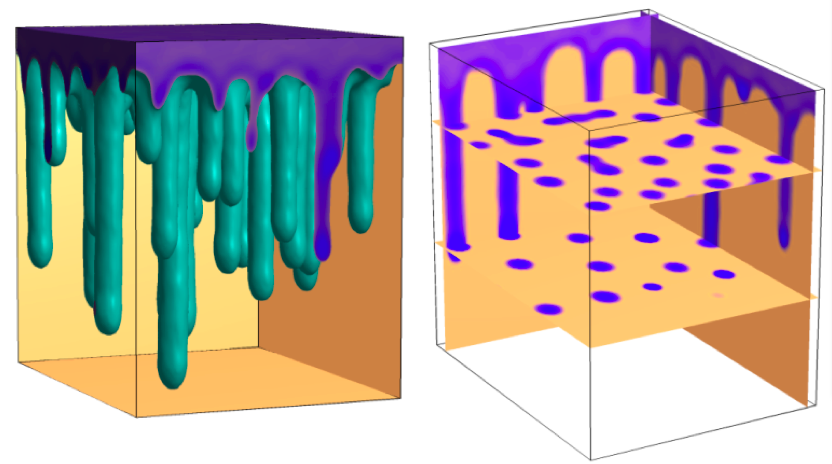
I developed a new paradigm for the description of multiphase flow at the continuum scale, which opens the door to modeling a whole range of phenomena that were inaccessible to existing mathematical models. This framework has already allowed us to model gravity-driven fingering during infiltration, a phenomenon that leads to the creation of preferential flow paths when water infiltrates into dry soil, even if the medium itself is homogeneous. Despite the fact that this phenomenon is pervasive in nature and had been characterized extensively in the laboratory, it had remained elusive to continuum mathematical models. The new model is able to quantitatively predict the characteristics of fingered flow observed in laboratory experiments. Capturing this fingering instability is important because it can exert a powerful control on evapotranspiration, and allow for the presence of subsoil water and deep drainage fluxes in arid and semiarid climates, where potential evapotranspiration far exceeds mean annual precipitation.
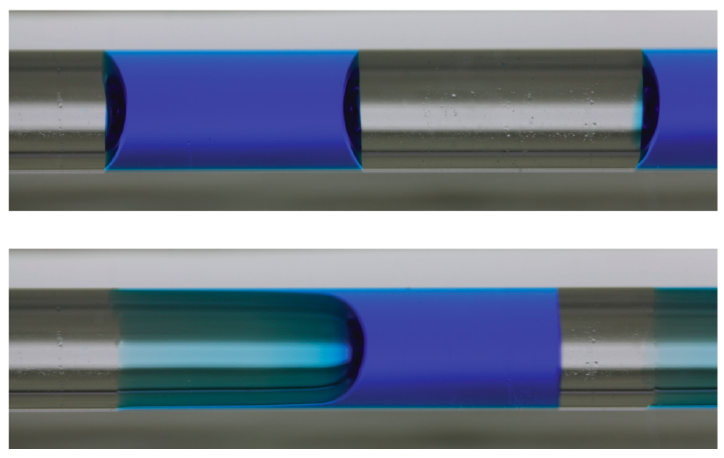
The equilibrium shape of a water droplet deposited on a flat solid surface illustrates two regimes in wetting phenomena. In the complete wetting regime, the droplet spreads over the solid surface, ultimately leaving a microscopic film attached to the solid. In the partial wetting regime, the droplet relaxes towards an equilibrium configuration, characterized by a static contact angle. The transition from complete to partial wetting, or from spreading to non-spreading systems, is controlled by the interfacial energies through the spreading coefficient. Spreading systems are relatively well understood, and diffusive scaling laws for the evolution of relevant quantities have been derived and confirmed experimentally. Non-spreading systems, however, continue to challenge our mathematical descriptions.
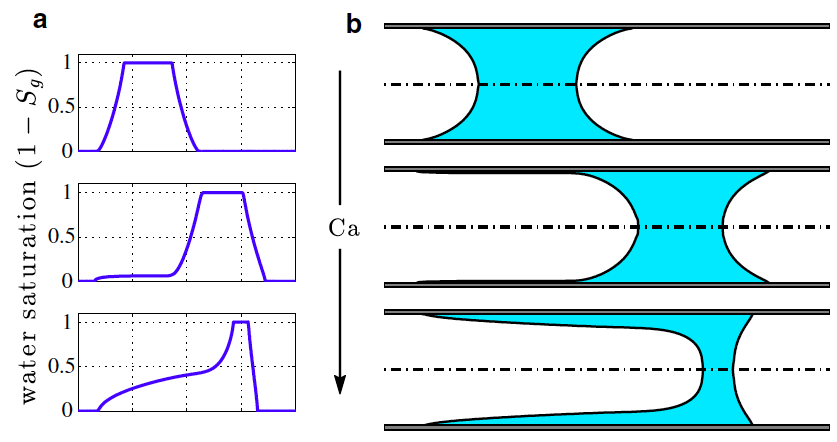
The fundamental limitations of traditional theories of multiphase flow are exposed with a minimal-ingredients setting: the flow of two phases (like air and water) in a capillary tube. At static equilibrium, partial wetting leads to compactons: non-spreading structures like drops and bubbles. Given that the geometry of the flow is essentially one-dimensional, one would like to describe the phenomenon with a 1-D model. Surprisingly, this is not possible with current theories of multiphase flow. I proposed a model of multiphase flow in porous media with non-spreading equilibrium configurations. This phase-field approach has allowed us to model the statics and dynamics of multiphase flow in a capillary tube in the partial-wetting regime. This work has paved the way to fundamental advances in understanding and macroscopic modeling of partial wetting in thin-film flows and multiphase flows in porous media.
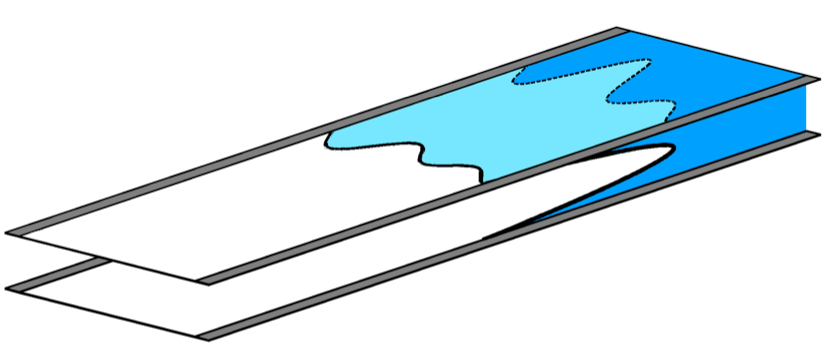
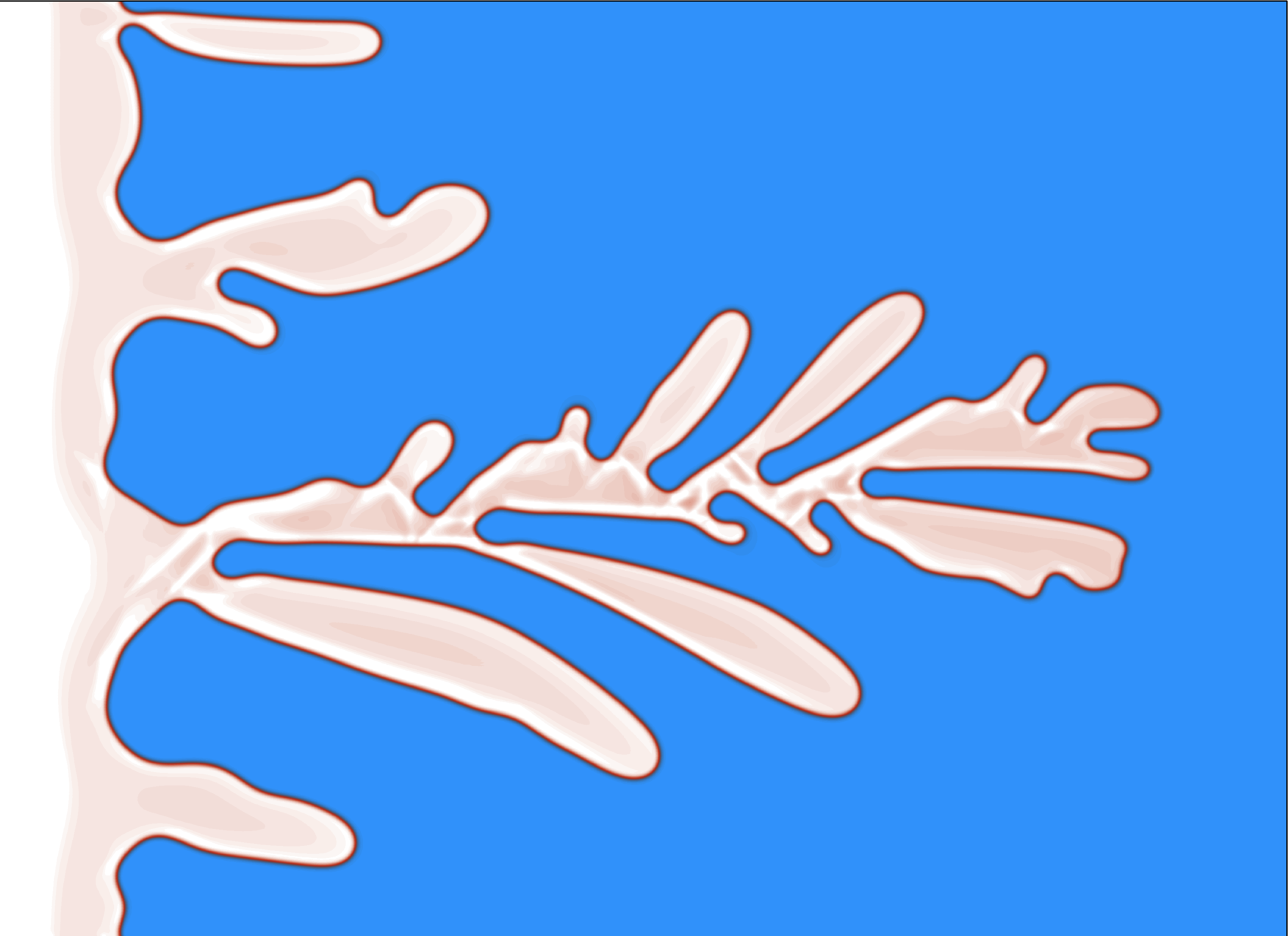

When a less viscous fluid displaces a more viscous one in a Hele-Shaw cell (the gap between two parallel plates) or a porous medium, the displacement front is unstable, and the hydrodynamic instability that ensues is referred to as viscous fingering. The displacement pattern is characterized by branching structures, with an intrinsic length scale that depends on the fluid properties, essentially viscosity and surface tension between the fluids, the injection rate and gap size, and the wetting properties of the system. Many authors have proposed scaling arguments to capture these dependencies, but experimental datasets show that none of these scalings fully captures the finger scale as the various parameters are modified.
I developed a continuum model of two-phase flow in Hele-Shaw cells that reproduces the experimental patterns of displacement. The model builds on the experience gain on the capillary tube problem. The key feature of our model is that it captures the dynamic properties of the displacement in the gap, in the sense that the thickness of the film of more viscous fluid left attached to the wall depends on the capillary number.
Nonlocal interface dynamics and pattern formation in gravity-driven unsaturated flow through porous media.
L. Cueto-Felgueroso and R. Juanes, Physical Review Letters, 101(24), 244504 (2008), doi:10.1103/PhysRevLett.101.244504.
Macroscopic phase-field model of partial wetting: bubbles in a capillary tube.
L. Cueto-Felgueroso and R. Juanes, Physical Review Letters, 108, 144502 (2012), doi:10.1103/PhysRevLett.108.144502
A phase-field model of unsaturated flow.
L. Cueto-Felgueroso and R. Juanes, Water Resources Research, 45, W10409 (2009), doi:10.1029/2009WR007945
Stability analysis of a phase-field model of gravity-driven unsaturated flow through porous media.
L. Cueto-Felgueroso and R. Juanes, Physical Review E, 79(3), 036301 (2009), doi:10.1103/PhysRevE.79.036301
Adaptive rational spectral methods for the linear stability analysis of nonlinear fourth-order problems.
L. Cueto-Felgueroso and R. Juanes, Journal of Computational Physics, 228:6536-6552 (2009), doi:10.1016/j.jcp.2009.05.045
Three-dimensional simulation of unstable gravity-driven infiltration of water into a porous medium.
H. Gomez, L. Cueto-Felgueroso, and R. Juanes, Journal of Computational Physics, 238, 217-239 (2013), doi:10.1016/j.jcp.2012.12.018